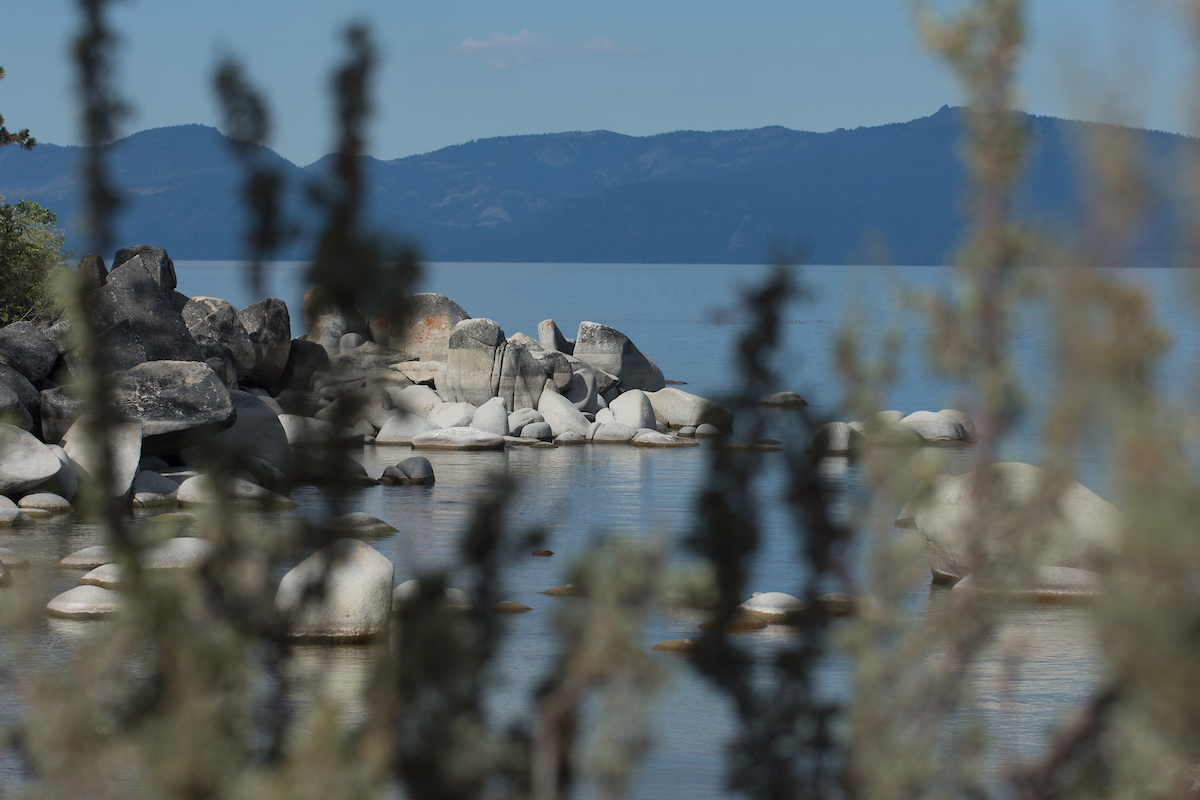Commitment to Lake Tahoe’s conservation continues

Most of us have a memory of the moment when Lake Tahoe first took our breath away. For many, that moment of awe was also our first call to protect it. As inspiring and captivating as the lake is, it is also incredibly fragile with a complex landscape of public and private land. With the recent celebration of the 53rd Earth Day in mind, we can see in Tahoe and around the world a growing recognition that people, communities and ecosystems are deeply interconnected.
Our beloved lake received some good news recently. Scientists who have been studying Lake Tahoe’s clarity for decades reported that the lake’s famed clarity last year was the clearest it has been since the 1980s. This report was a shot in the arm, coming as it has on the heels of record storms this winter and several years of drought, wildfires and increasingly extreme weather events. However, the story of Lake Tahoe’s conservation is far from over.
After the Washoe Tribe stewarded the lands of the Tahoe Basin for millennia, the lake began a free fall of decline because of unplanned development in the 1960s and ’70s. In 1969, as environmental awareness was blossoming globally, the states of Nevada and California signed a unique interstate compact creating the Tahoe Regional Planning Agency (TRPA) as the first regional environmental planning organization in the nation.
How development is viewed in the Tahoe Basin has swung like a pendulum over time. It is true that leaders in the mid-20th century were calling for a city the size of San Francisco here in the Tahoe Basin. The first Lake Tahoe Regional Plan in the late ’80s set development caps and protected sensitive lands. The plan also set high standards for construction and redevelopment to improve water quality, preserve open space and maintain scenic quality.
At the same time, public buy-back programs acquired more than 9,000 private parcels dedicated to open space; and today 90 percent of the basin is in public ownership.
By the 2000s, lake clarity, which had been in decline for decades, had largely stabilized. But policies that stopped harmful development also slowed work to modernize existing homes and businesses to be more environmentally friendly. As existing properties continued to pollute and become rundown, property owners and many of TRPA’s partner agencies questioned how far the pendulum had swung.
The broadly supported 2012 Regional Plan Update was a paradigm shift for Lake Tahoe. The update kept the growth caps and high standards from the original plan while creating new incentives and streamlined permitting services to encourage environmental redevelopment, especially within Lake Tahoe’s aging town centers. Studies showed incentives to concentrate development in town centers would advance water quality goals and create more bikeable, walkable communities.
In its first 10 years, the updated plan has helped catalyze $430 million in business and tourist accommodation improvements. Those projects have delivered water quality, scenic and transportation improvements, and have secured additional workforce housing. In that same decade, partners in the comprehensive Lake Tahoe Environmental Improvement Program completed more than 300 restoration projects including transportation improvements, forest health, stream restoration and aquatic invasive species control.
The bistate compact recognizes that successful conservation of Lake Tahoe relies partly on environmental improvement programs like forest restoration and sustainable trails, and also on proactively addressing the way developed areas and a limited amount of growth are managed.
Tahoe’s interwoven landscape of public and private lands is now being strengthened by partnerships. Thanks to the work of thousands of private property owners and dozens of public agencies, more than 500,000 pounds of clarity-harming pollutants are being kept out of the lake every year. A recent 10-year report on Lake Tahoe’s water quality program showed the basin surpassed the interim milestone and could be on track to restore the lake’s annual clarity to nearly 100 feet.
Today, Lake Tahoe’s environment and communities face new challenges. From mega-fires and mega-winters, to a deepening crisis of housing affordability, there is work ahead for the region. The positive news about last year’s clarity is hopeful, but ongoing research about the lake’s biology and the impacts of climate change are needed to inform environmental programs.
The paradigm shift of 2012 is still underway. As the pandemic subsides, more environmental redevelopment projects are starting to come forward. While new projects must maintain the existing growth caps and building limits, market demand for upscale development and second homes is making it difficult to attract investment in workforce housing. TRPA is once again taking a hard look at how our policies can have the greatest benefit for workers, businesses and the fabric of our communities.
As Tahoe’s conservation story continues, protecting the lake and improving communities will remain TRPA’s guiding star. The way that most of us experience Tahoe — exploring miles of trail, taking in the mountain scenery and enjoying the lake’s crystal-clear waters — will steadily improve with every restoration and infrastructure project. But Tahoe’s environment, economy, and communities are intertwined and revitalizing developed areas delivers benefits to Tahoe’s natural areas as well as our local economies. As has been proven over the decades, we don’t need to choose between the two.
Julie Regan became the executive director of the Tahoe Regional Planning Agency in November 2022 and has been an executive at the agency since 2003.
Editor’s note: This opinion was submitted in response to the April 21 opinion piece written by Pamela Mahoney Tsigdinos about Lake Tahoe and the Tahoe Regional Planning Agency. The Nevada Independent encourages public discourse and welcomes differing viewpoints on its opinion page.
